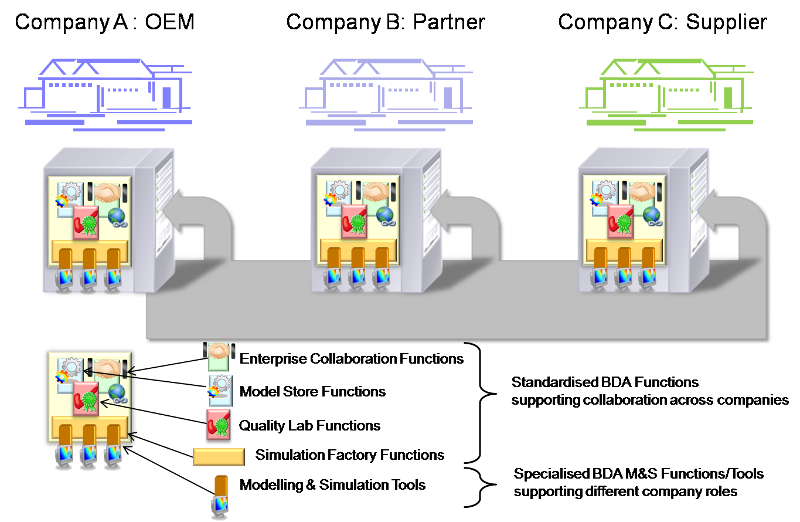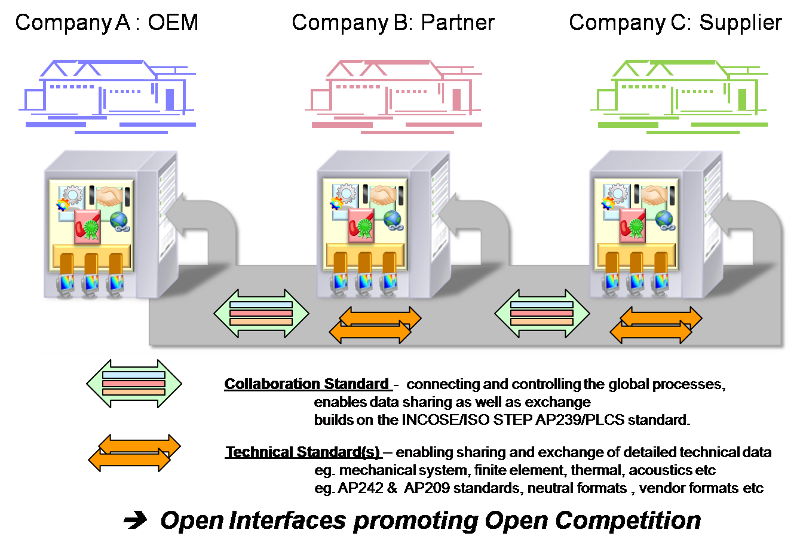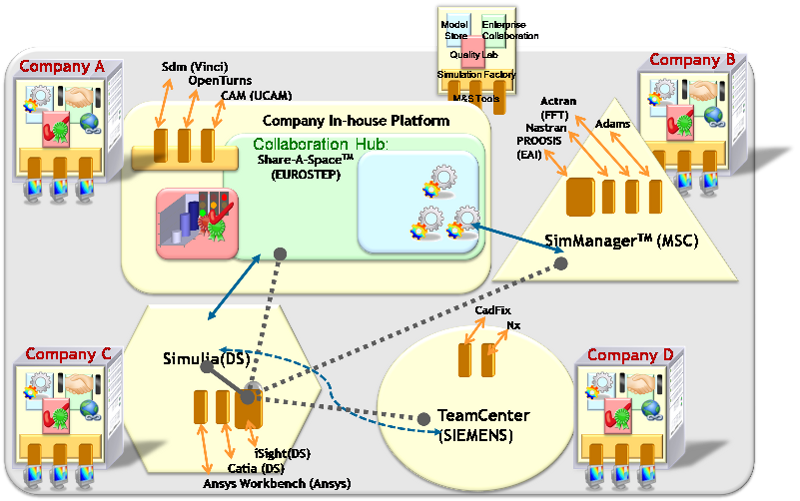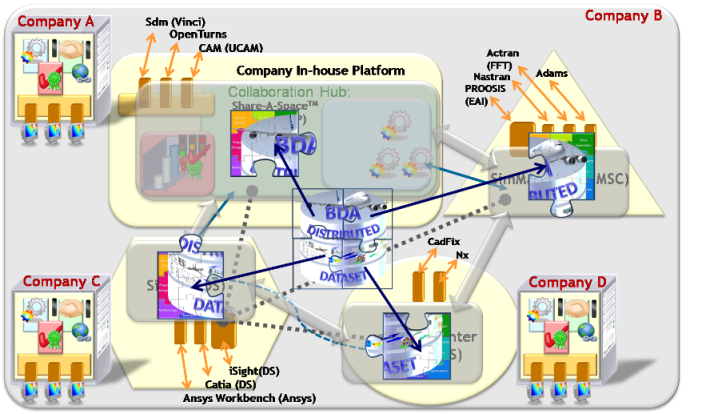Business Rationale for the BDA Architecture¶
The image below shows a scenario of three collaborating companies, an OEM, a Partner and a Supplier. This scenario would also be applicable if one or more of the companies was a team within a company.
Standardised BDA functions have been developed, and these are broadly categorised into four overlapping groups:
- Enterprise Collaboration Functions (green): These are concerned with managing the collaborative activity to evolve, and review the BDA dataset through the collaboration lifecycle whilst ensuring security and IPR.
- Model Store Functions (blue): These are concerned managing and sharing the BDA dataset as produced by the simulation factory functions and validated by the Quality functions. This includes the viewing and architecture aspects.
- Quality Laboratory Functions (pink): These secure the overall quality management for modelling and simulation in a system engineering lifecycle context, providing a systematic approach to quality criteria and making and recording risk informed decisions.
- Simulation Factory Functions (orange): These provide the functions for executing collaborative simulations, providing definitions and access to specialised modelling and simulation methods and tools, to enable simulation data to be produced.
These together (yellow) enable the connection of Specialised Modelling and Simulation Functions (dark orange), Methods and Tools that support the different behaviours of the digital aircraft. This set of functions is implemented by the platforms in the each of the collaborating companies.
The image below shows the different communication standards. The four overlapping groups of functions explained above are combined to form the collaboration standard, depicted by the large green arrow with blue, pink and orange arrows representing the four groups.
This standard allows the connection and control of the BDA dataset including the global processes. It enables information sharing and exchange. It is built on the ISO standards 10303-233:2012 (System Engineering) and 10303:239:2012 (Product Lifecycle Support). The dark orange arrows depict the communication of the technical standards. These enable the sharing and exchange of the detailed technical data for the behavioural simulations, e.g. finite element files, geometry files and other specialist data. These interfaces are published, so providing open interfaces which as well as allowing communication between platforms, also promotes open competition between platforms so a company is able to use the platform that best suits their needs.
Some examples of these platforms could be:
- Generic BDA Solutions:
- Enovia (Dassault Systemes)
- SimManager (MSC)
- TeamCenter (Siemens)
- Share-A-Space (Eurostep)
- Virtual Lab (LMS)
- Specific M&S Tools
- CADFix (TranscenData)
- Adams (MSC)
- Nastran (MSC)
- Proosis (EcosimPro)
- CatiaV6 (Dassault Systemes)
- NX (Siemens)
A more detailed possible example of collaborating federated validation platforms is shown below:
The overall large grey square represents the collaboration context within which the trusted organisations are collaborating. “Company A” has an in-house developed platform and is sponsoring the (green) collaboration hub which is provided by Share-A-Space. It has connections to several M&S tools accessible from the Hub using the Simulation Factory Capabilities. “Company B” is using SimManager as the collaboration platform which communicates with the Collaboration Hub from “Company A”. “Company C” and “D” are using other collaborating platforms, and this is represented by using different shapes (triangle, hexagon etc) for their platforms. The blue arrows represent high/low bandwidth connections in the extended enterprise using the BDA web-services. The grey connections show technical tool integration partnerships. The data on these platforms together with their ability to communicate with each other allows them together to make up the distributed BDA dataset, as illustrated below.
Distributed Dataset For more details on the Collaboration Standard see Architecture Rationale



